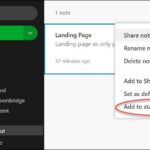If you’re a business owner or manager, you know how important it is to give your consumers a positive experience. Customers have high expectations and are likely to share negative than positive experiences with your business.
But how can you tell if your products and services are meeting the needs of your customers? Customer satisfaction (CSAT) surveys provide the key. But have you ever questioned why CSAT surveys, in particular, rather than other measures, are used? What sorts of questions should you ask in these polls?
Keep reading to find out the importance of gathering client feedback and how to improve the effectiveness of your satisfaction surveys.
What is a Customer Satisfaction Survey?
A customer satisfaction survey is a technique used by companies to get feedback from customers about the quality of the company’s products and services as a whole. Customers are asked to review their overall experience with the company, from the quality of the product or service to the staff’s helpfulness and the transaction process’s simplicity. The survey’s results can be used as a barometer of consumer loyalty and guide future product development.
Why Are Customer Satisfaction Surveys Important?
Customer satisfaction surveys are essential for several reasons:
- Customer Feedback: Surveys provide a direct way to collect feedback from customers. Understanding their opinions, preferences, and experiences helps businesses gain insights into how they can better meet customer needs and expectations.
- Measure Customer Loyalty: Surveys often include questions that assess customer loyalty and the likelihood of recommendation, using Net Promoter Score, NPS survey tools. Measuring customer loyalty is crucial for understanding long-term customer relationships and identifying promoters who can contribute to positive word-of-mouth referrals.
- Product and Service Improvement: Surveys provide valuable insights into product or service performance, usability, and customer expectations. By collecting feedback on specific features, functionality, or areas of improvement, businesses can make data-driven decisions to enhance their offerings and stay competitive in the market.
- Decision-Making and Strategy: Survey results offer data-driven insights that can inform strategic decision-making. Businesses can prioritize resources and initiatives based on customer feedback, aligning their strategies with customer needs and preferences.
- Competitive Advantage: Customer satisfaction is a key differentiator in a competitive market. Surveys help businesses understand how they compare to their competitors, identify areas where they excel or lag, and develop strategies to differentiate themselves based on customer satisfaction.
Overall, customer satisfaction surveys help businesses make data-driven decisions and maintain a customer-centric approach, ultimately improving customer satisfaction and business success.
Key CSAT Questions
Customer satisfaction assessment plays a crucial role in understanding how customers perceive your products or services and identifying areas for improvement. It’s essential to ask the right questions to obtain actionable insights from a CSAT survey. Some key CSAT questions can provide valuable feedback and drive actionable improvements.
1. Overall Satisfaction: On a scale of 1-10, how satisfied are you with our product/service?
This question provides a broad measure of overall customer satisfaction. It helps gauge the overall impression customers have of your offerings. By analyzing the distribution of responses, you can identify areas where satisfaction is high or low and prioritize improvement efforts accordingly.
2. Ease of Use: How easy was using our product/service for you?
This question assesses the user-friendliness of your product or service. It helps you identify any barriers or difficulties customers may encounter while interacting with your offerings. Understanding ease of use issues can lead to targeted improvements in product design, user interface, or instructional materials.
3. Customer Support: How would you rate the quality of our customer support?
The quality of customer support directly impacts customer satisfaction. This question provides insights into the effectiveness and responsiveness of your support team. Analyzing customer feedback on customer support helps identify opportunities for training, process improvements, or the need for additional support channels.
4. Product/Service Performance: How well did our product/service meet your expectations?
Understanding your product or service meets customer expectations is crucial for customer satisfaction. This question helps identify gaps between customer expectations and the actual performance of your offerings. By analyzing the responses, you can identify specific areas for improvement, such as product features, reliability, or service levels.
5. Value for Money: Does our product/service provide value for the price?
Customers want to know they are getting value for their money. This question helps assess whether customers perceive your product or service as worth the price they paid. It can highlight pricing concerns or opportunities to enhance the perceived value by adding features or improving quality.
6. Problem Resolution: Did we address and resolve your issue promptly?
Prompt and effective problem resolution is crucial for customer satisfaction. This question helps evaluate how well your organization handles customer issues and complaints. It can highlight areas where your support processes may need improvement, such as response time, issue escalation, or follow-up.
7. Recommendation: How likely will you recommend our product/service to others?
Customer recommendations have a significant impact on your business’s growth and success. This question assesses customer loyalty and their likelihood of advocating for your brand. It helps identify promoters who can contribute to positive word-of-mouth marketing and areas where improvements are needed to drive customer advocacy.
8. Communication: How well did we communicate with you throughout your experience with us?
Clear and effective communication is essential for a positive customer experience. This question assesses how well your organization communicates with customers across various touchpoints. It can identify areas where communication can be improved, such as clarity of information, timeliness, or consistency across channels for chatgpt.
9. Personalization: Did we personalize our product/service to meet your needs?
Customers appreciate personalized experiences that cater to their unique needs. This question helps evaluate whether your product or service meets customers’ requirements. It can highlight opportunities for customization, personalization, or tailoring your offerings to address customer preferences better.
10. Improvement Suggestions: What areas should we improve to enhance your experience?
Directly asking for improvement suggestions encourages customers to provide specific feedback on areas they believe need enhancement. This open-ended question can uncover valuable insights and innovative ideas for improvement that other predefined questions may not have captured.
Takeaway
Utilizing customer satisfaction surveys can be a highly effective means of enhancing customer satisfaction and boosting revenue. However, asking the appropriate questions at the appropriate juncture is crucial.
To obtain valuable insights into your customers’ experiences, mapping out their journey and asking relevant questions when conducting surveys is important. This will help you to maximize the benefits of your surveys. This can assist you in identifying areas that need improvement and improving the overall customer experience.








